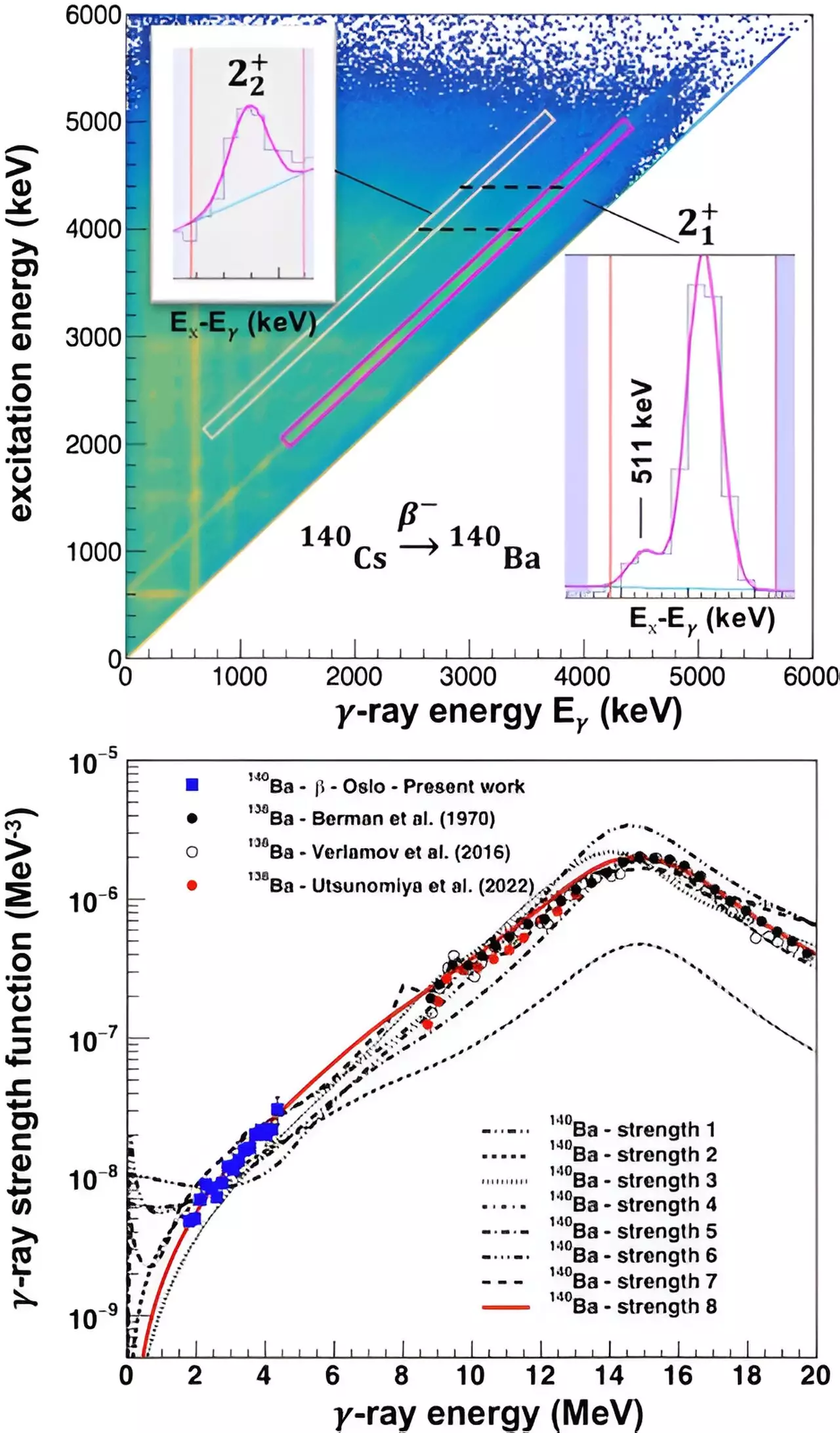The genesis and demise of stars have been a subject of intrigue and fascination for both scientists and stargazers alike. As they illuminate the cosmos, stars play a crucial role in the creation of elemental matter that forms the very fabric of our universe. Despite extensive research, definitive answers regarding their birth, lifecycle, and the processes that allow them to flourish for billions of years remain tantalizingly out of reach. A collective effort from international researchers, including experts from institutions like the U.S. Department of Energy’s Argonne National Laboratory, has brought us closer to understanding the genesis of heavy elements within these celestial giants.
Stars are born from vast clouds of gas and dust, where gravitational forces pull together matter, creating dense cores that eventually ignite nuclear fusion. This process marks the transformation of hydrogen into helium within the star’s core, releasing immense energy that powers the star and causes it to shine brightly. Over time, stars evolve, and their lifespans can extend from millions to billions of years, depending on their mass. Larger stars may end their lifecycle with a spectacular supernova explosion, while smaller stars like our Sun may shed their outer layers, leaving behind a dense core known as a white dwarf.
Given this complex lifecycle, astronomers have long pondered questions surrounding the creation of heavier elements such as barium, lanthanum, and cesium. The processes responsible for these transformations, known as nucleosynthesis, come primarily in two forms: rapid (r-process) and slow (s-process). The r-process occurs in violent environments such as supernovae, while the more gentle s-process takes place in the cores of older stars nearing the end of their lives.
In a recent groundbreaking study published in Physical Review Letters, researchers have started to unlock the secrets surrounding the formation of some of these heavy elements. Utilizing advanced experimental data, the team has made significant strides in understanding the neutron-capture processes, particularly involving the isotope barium-139. Under the leadership of prominent scientists like Artemis Spyrou and Dennis Mücher, the international research team tapped into the sophisticated capabilities of CARIBU at Argonne to explore how barium-139 transitions into barium-140.
This exploration is pivotal, as barium-139’s reaction rate during its transition to barium-140 has previously posed considerable uncertainty for predictive models determining elemental presence in stars. By gaining the first experimental constraints on these reaction rates, researchers have begun to elucidate the complexities of nucleosynthesis processes and how various astrophysical mechanisms contribute to element formation.
While much is known about the r-process and s-process, recent astronomical observations have suggested a third pathway—the intermediate (i-process). This process seems to account for unusual abundance patterns observed in stars previously thought to lack heavy elements. This revelation reinforces the idea that the universe’s arcane chemistry is richer and more intricate than traditional models have suggested. Scientists now recognize that understanding these processes can provide critical insights not only into stellar evolution but also into the very origins of the elements that constitute our planet.
This interdisciplinary research has underscored the importance of collaboration among scientists, leveraging sophisticated physics facilities to probe deeper into cosmic phenomena. It sheds light on the potential for new discoveries through enhanced experimental methods, such as the detection of gamma rays emitted during radioactive decay, which allow for the indirect measurement of reaction rates.
Equipped with this new understanding of neutron capture processes, scientists are poised to conduct further investigations using upgraded facilities like nuCARIBU. The anticipation surrounding these upcoming studies reflects the scientific community’s commitment to understanding the fabric of the universe. By refining current methods and expanding research into neutron-rich isotopes, researchers hope to unlock even more about the mechanics of stellar nucleosynthesis.
As scientists strive to unravel these stellar enigmas, they acknowledge the understated significance of these investigations. Every discovery about star formation and elemental creation adds to a larger narrative about our universe and our very existence within it. Each interaction we have with the elements produced in stars not only enriches our planet but connects us intrinsically to the expansive cosmos.
While we have made remarkable progress in understanding the life cycles of stars and the genesis of elements, the journey to uncovering the universe’s secrets remains an ongoing endeavor. This collaborative research embodies both the challenges and triumphs inherent in the pursuit of knowledge about the cosmos that surrounds us. With each experiment and discovery, we inch closer to grasping the extraordinary processes that govern our universe.


Leave a Reply